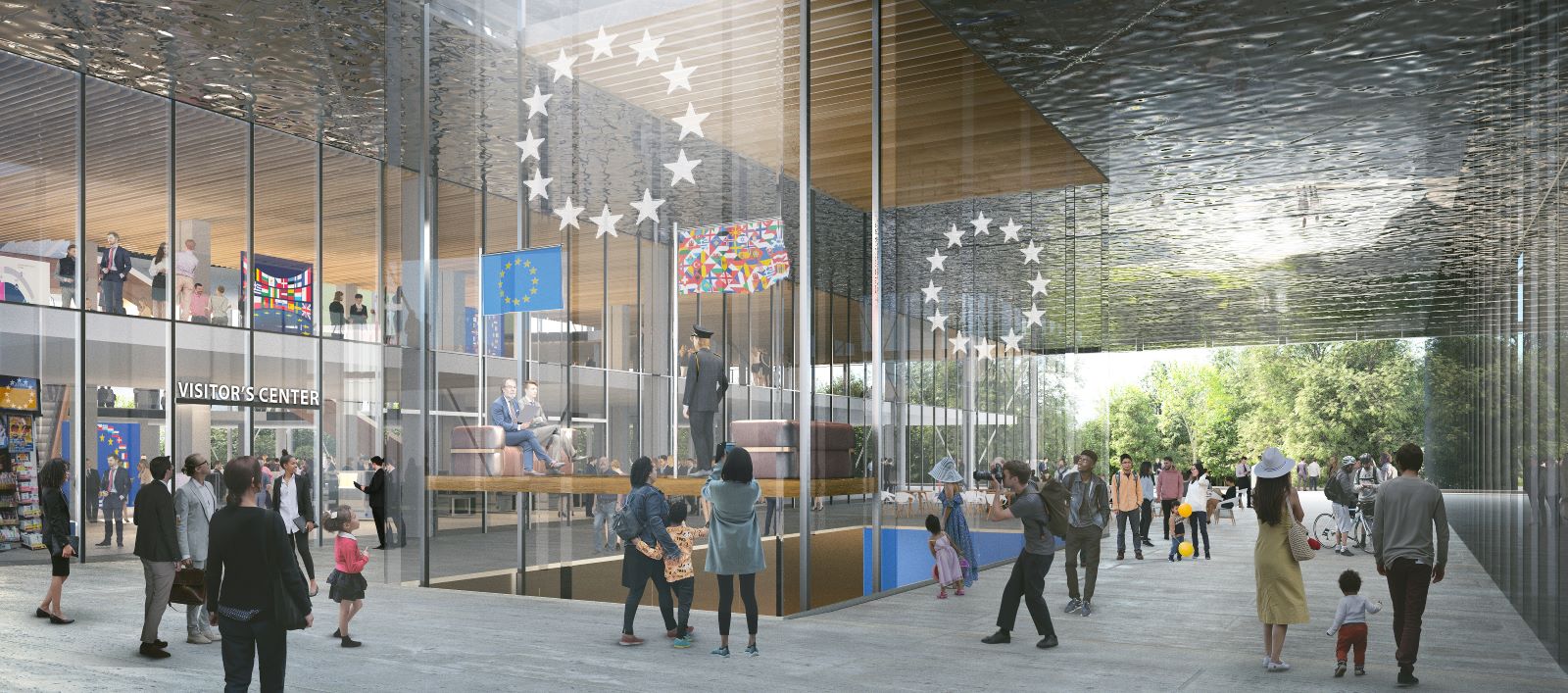EUROPARC, a design collective made up of five architectural studios from five European countries, won the international competition to design the new European Parliament building. The collective’s winning proposal focuses on the renewal of the Paul-Henri SPAAK Building in Brussels, in accordance with a circular approach. In addition, it honors European democracy, most notably through the collective’s international makeup.
EUROPARC is composed of architectural studios JDSA / Julien De Smedt Architects (DK/BE), Coldefy (FR), CRA-Carlo Ratti Associati (IT), NL Architects (NL) and Ensamble Studio (SP), with the support of engineering companies from UTIL (BE) and Ramboll (DK). Together, these teams account for over 30 different nationalities in their ranks.
The design seeks to address urgent challenges faced by Europe and the world at large, including climate change, social inequalities and the blurring of physical and digital domains – the latter is also reflected in the collective’s mode of collaboration, where a remote and flexible approach was adopted since the first COVID-19 outbreak.
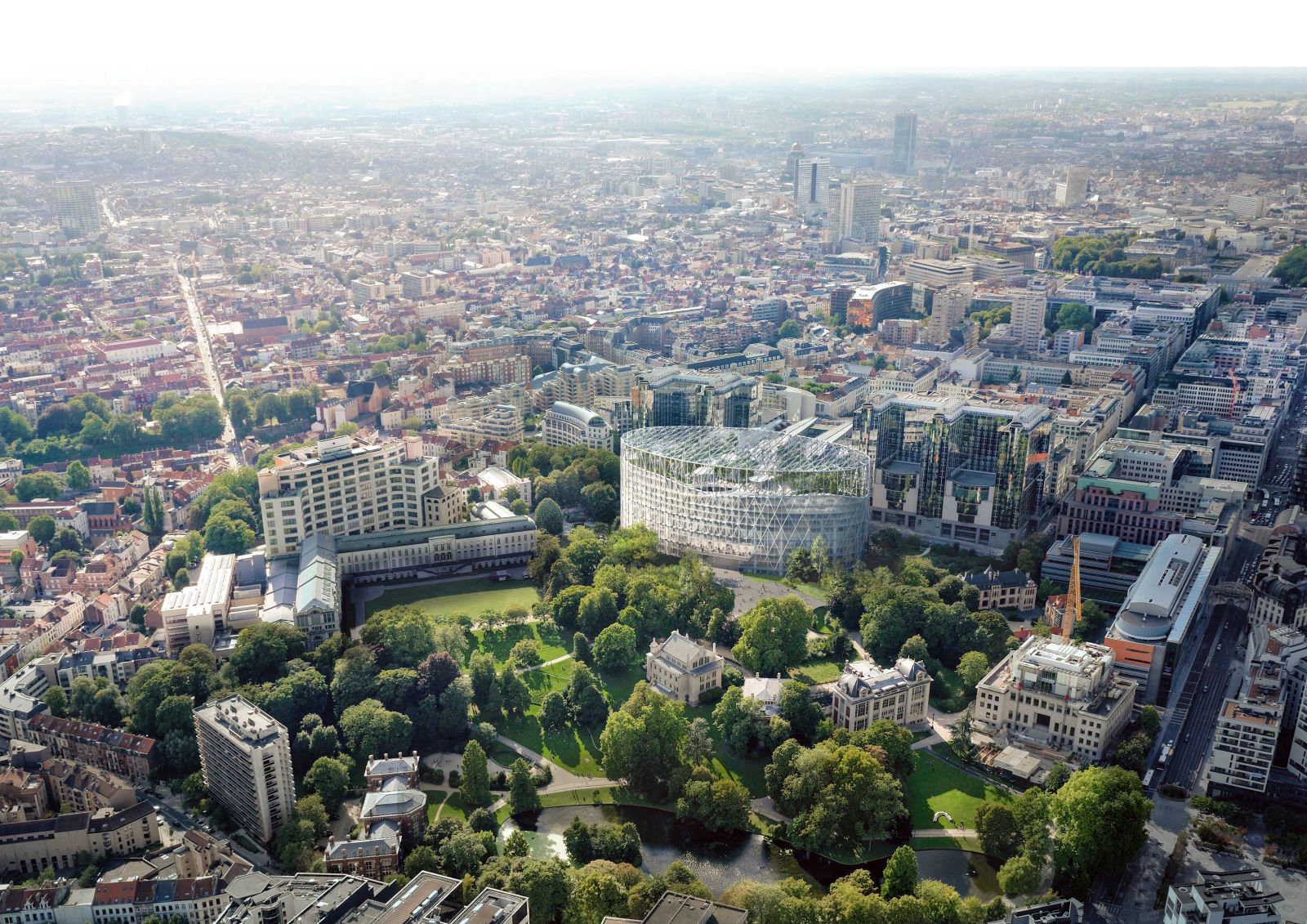
The Proposal
The current SPAAK building has numerous shortcomings. However demolishing it and replacing it with a new palace might be the wrong approach. In the building sector, over 50% of the carbon footprint generated happens in constructing the raw structure of a building. If fully dismantled, all that expense is lost and needs to be spent again in a new construction. Here, the strategy should be to rigorously re-use most of the SPAAK structure.
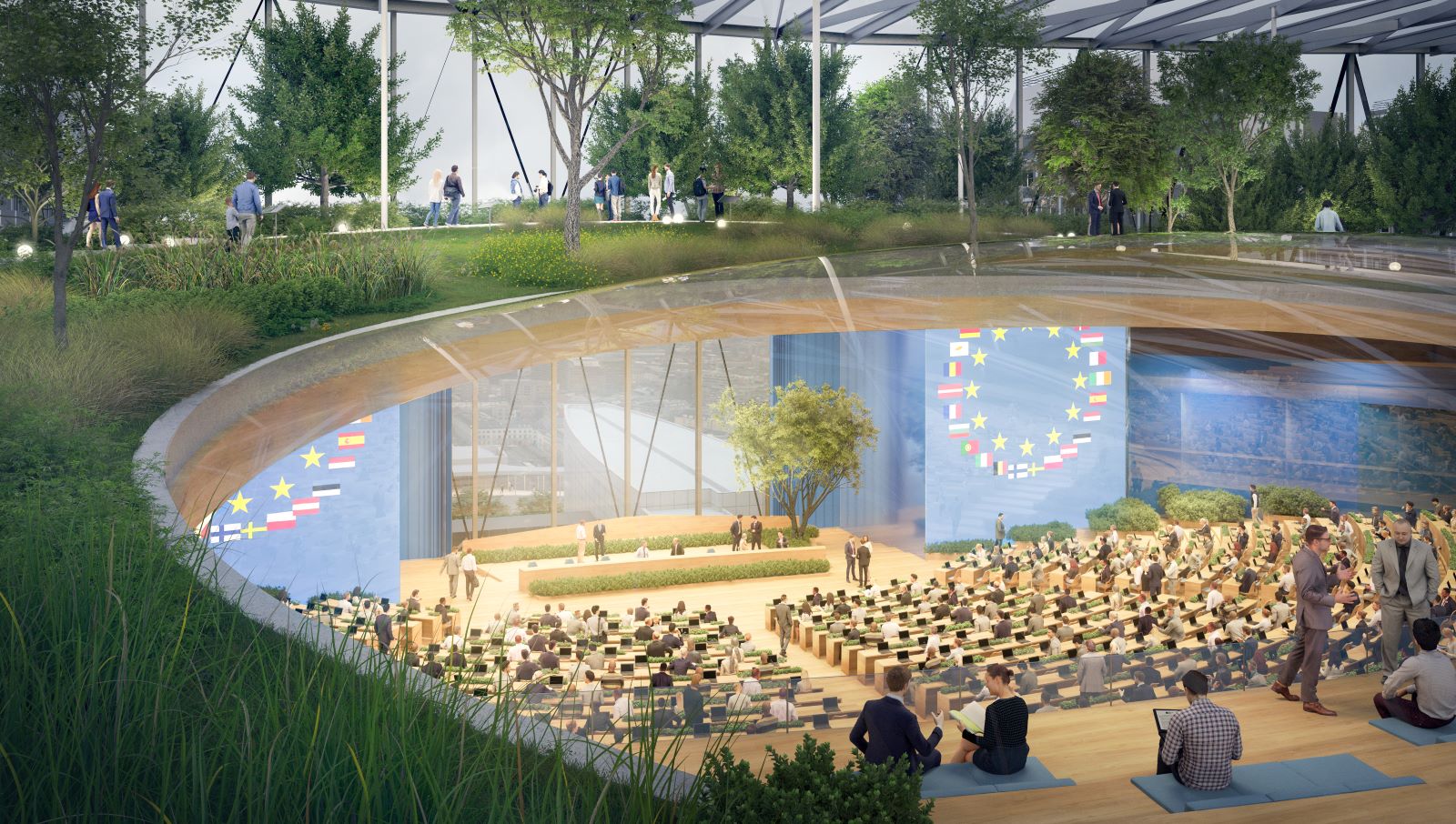
Connection to the City
On an urban scale, the design by EUROPARC aims to strengthen the linkage between the building and the city. By opening up the block, it enhances the continuity of pedestrian flows in the area and creates a stronger connection between Place du Luxembourg and Parc Léopold. The public realm is expanded both inside and outside the architecture, creating a more welcoming experience for the citizens and visitors of Brussels. Therefore, a public passage could be created through the Parliament. In a natural and intuitive way the passage will provide a grand entrance to visitors of the Parliament and establish an actual node in the pedestrian network of Brussels. The Spinelli building in front, on the axis from Gare d’Europe, will be excavated and, instead of obstructing the Spaak, will become an open-air entrance to the Parliament.
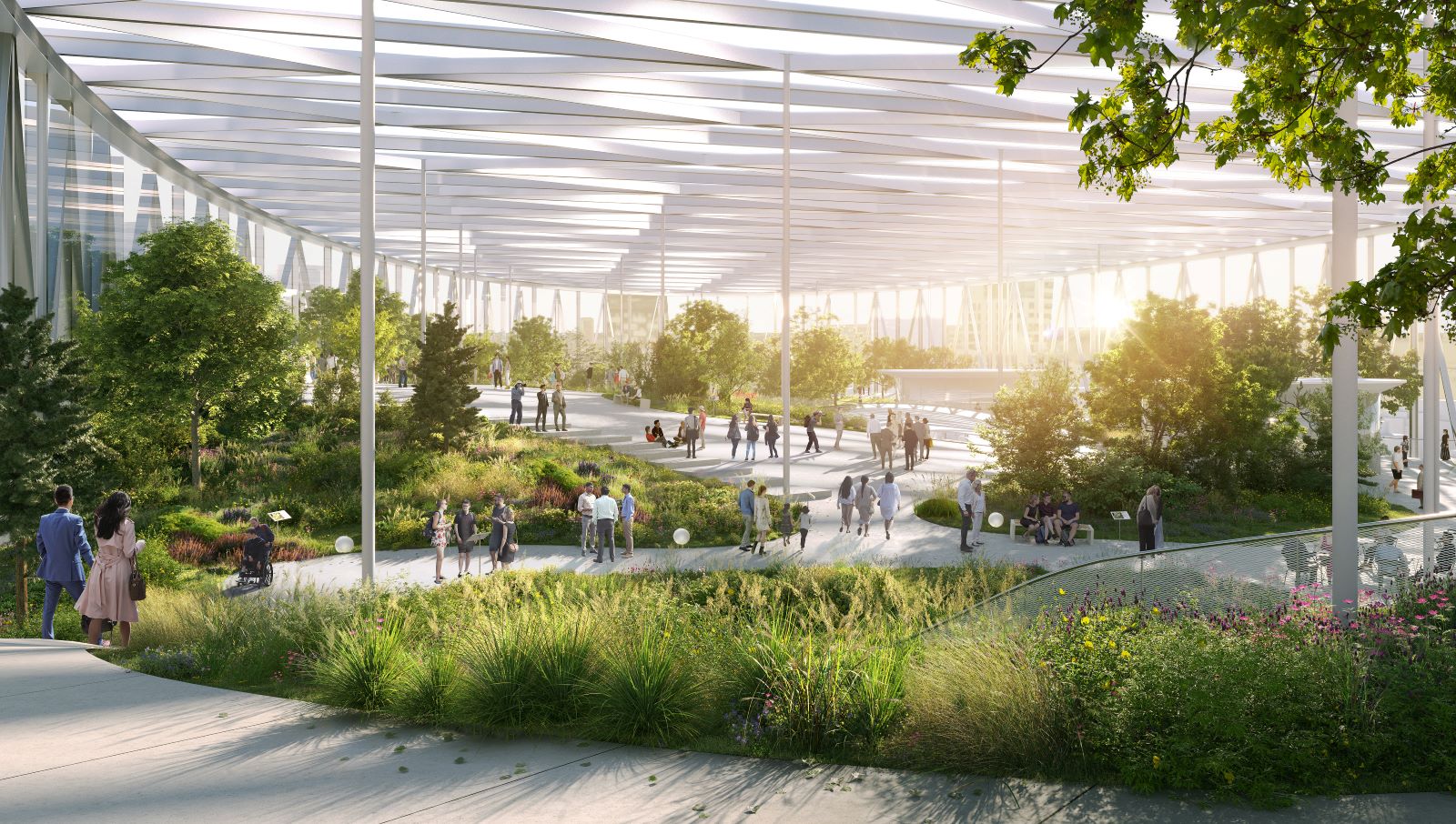
The Hemicycle
The new assembly chamber of the European Parliament, called the Hemicycle, will be repositioned on the upper levels of the renewed building to meet the spatial requirements for a modernized chamber. It will be equipped with digital amenities to enhance transparency and encourage external participation. Another primary feature is the large windows which establish a visual dialogue between the Parliament, the rooftop garden, as well as the city and European citizens at large. One of these large windows can also become a screen to transmit information in real time during assemblies.
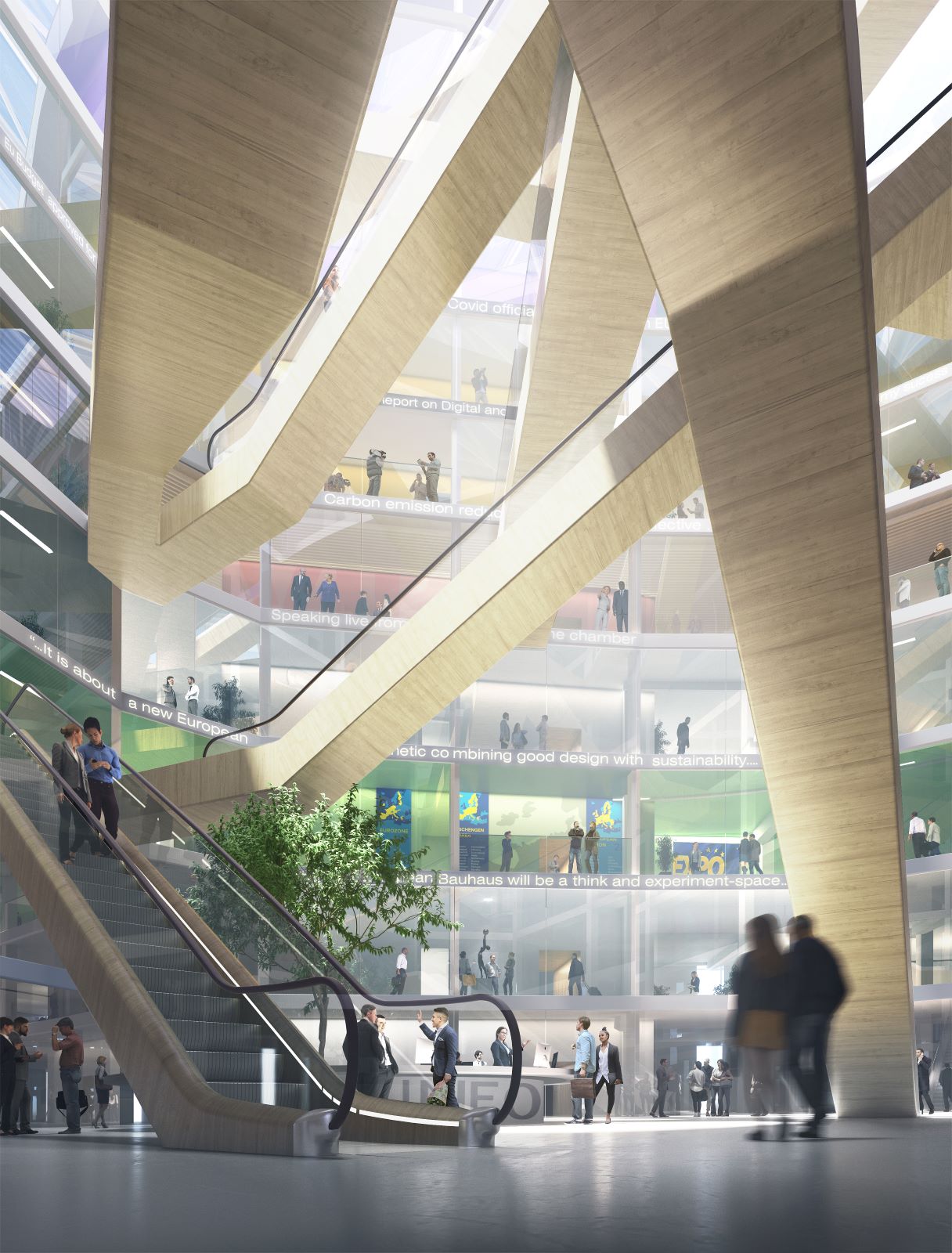
The Green Agora
Located on the highest floor, the Green Agora is the culmination of the public visitors’ journey in the building. The botanical garden draws inspiration from the “agora” in Ancient Greece. Not only visually connected to the Hemicycle through the latter’s open ceiling, the Green Agora will also serve as the beacon of European democracy, where citizens and the Members of the European Parliament meet and exchange thoughts. In addition, the spirit of pan-European synergy is reinforced in natural terms, as the park brings together vegetation indigenous to all the member states to form a multifaceted European ecosystem.
All in all, the new SPAAK building by EUROPARC – with the permeable ground floor, the Hemicycle, the Green Agora and beyond – creates a civic ecosystem that places people at the center of the spatial experience and brings them closer to the democratic processes of Europe.
